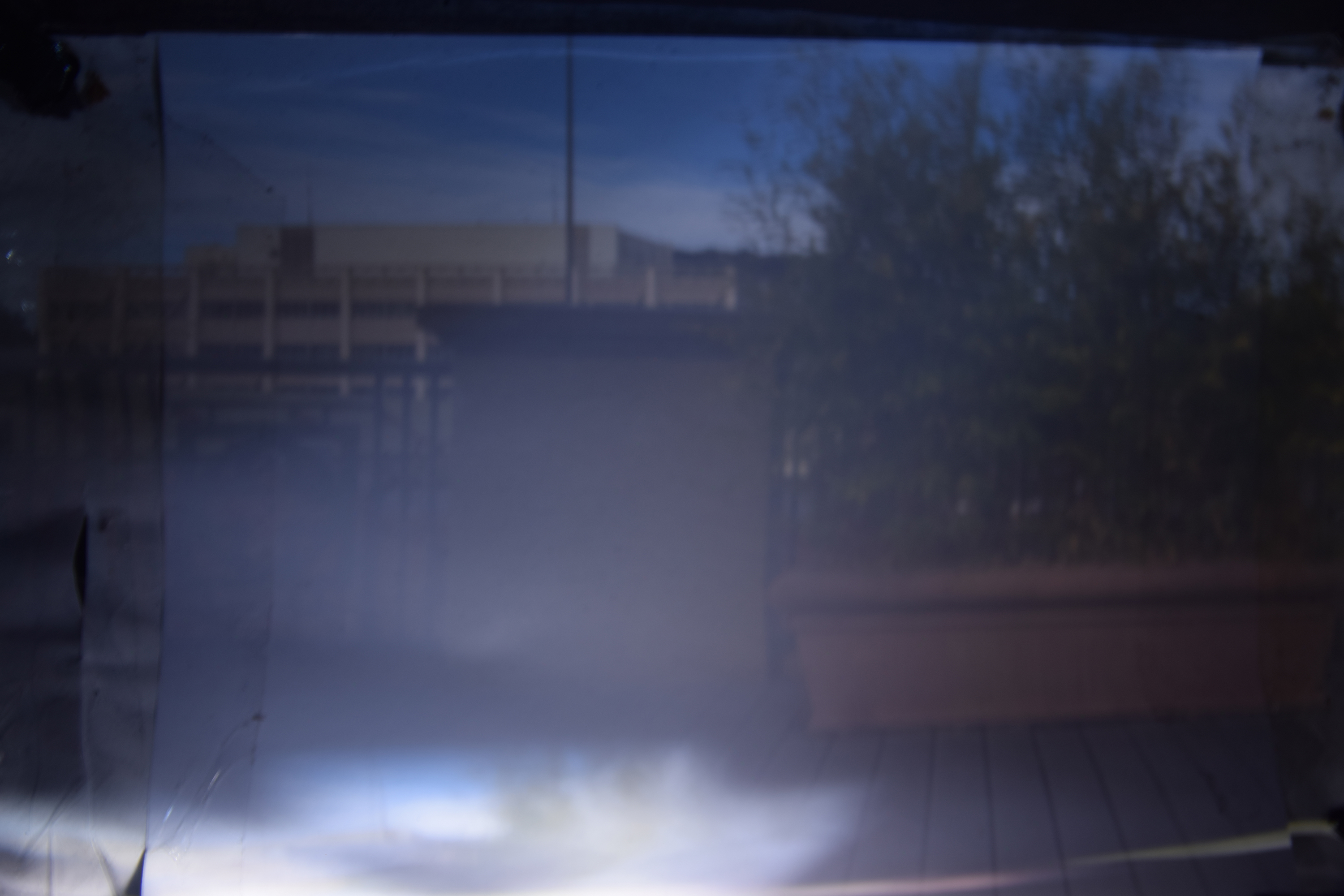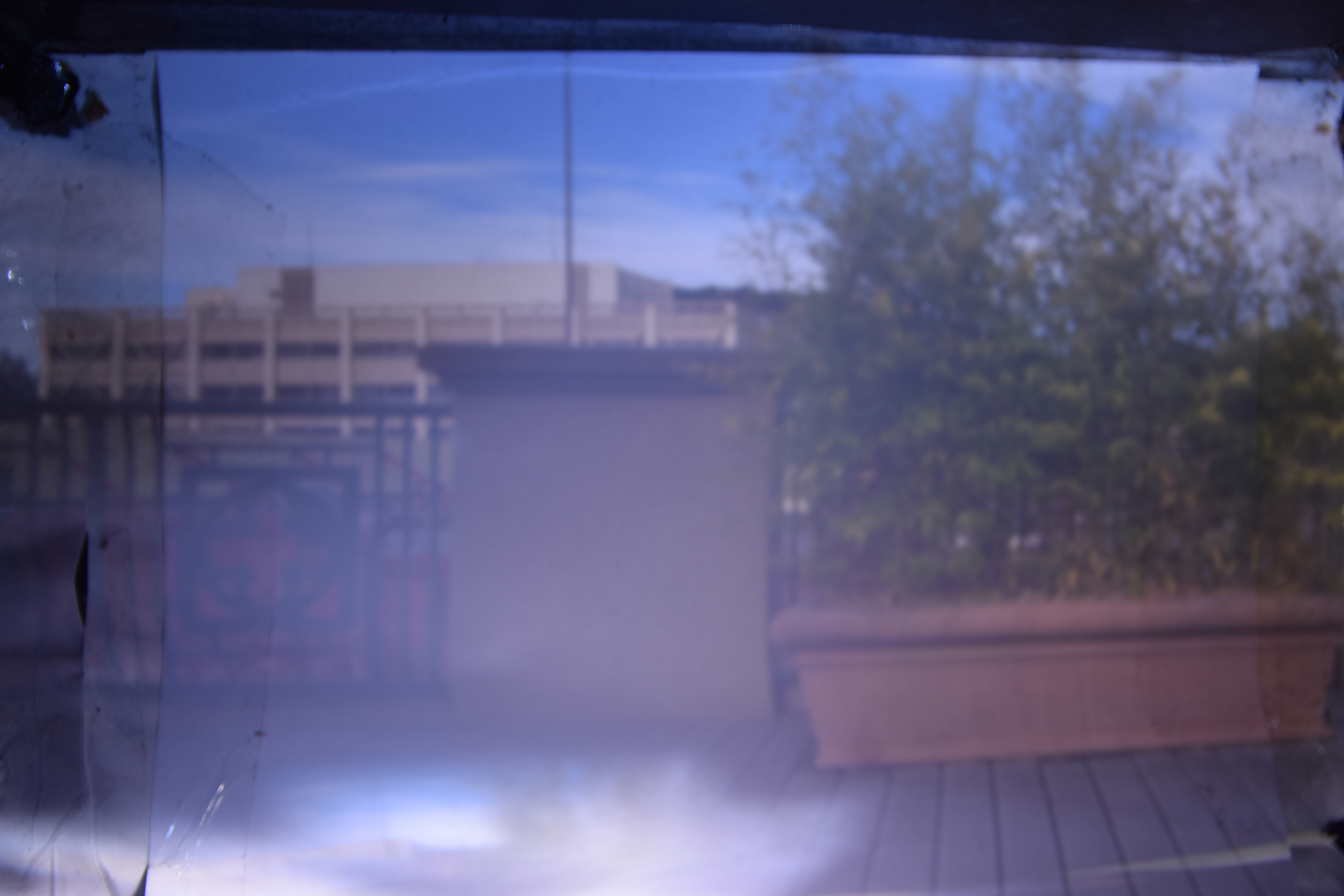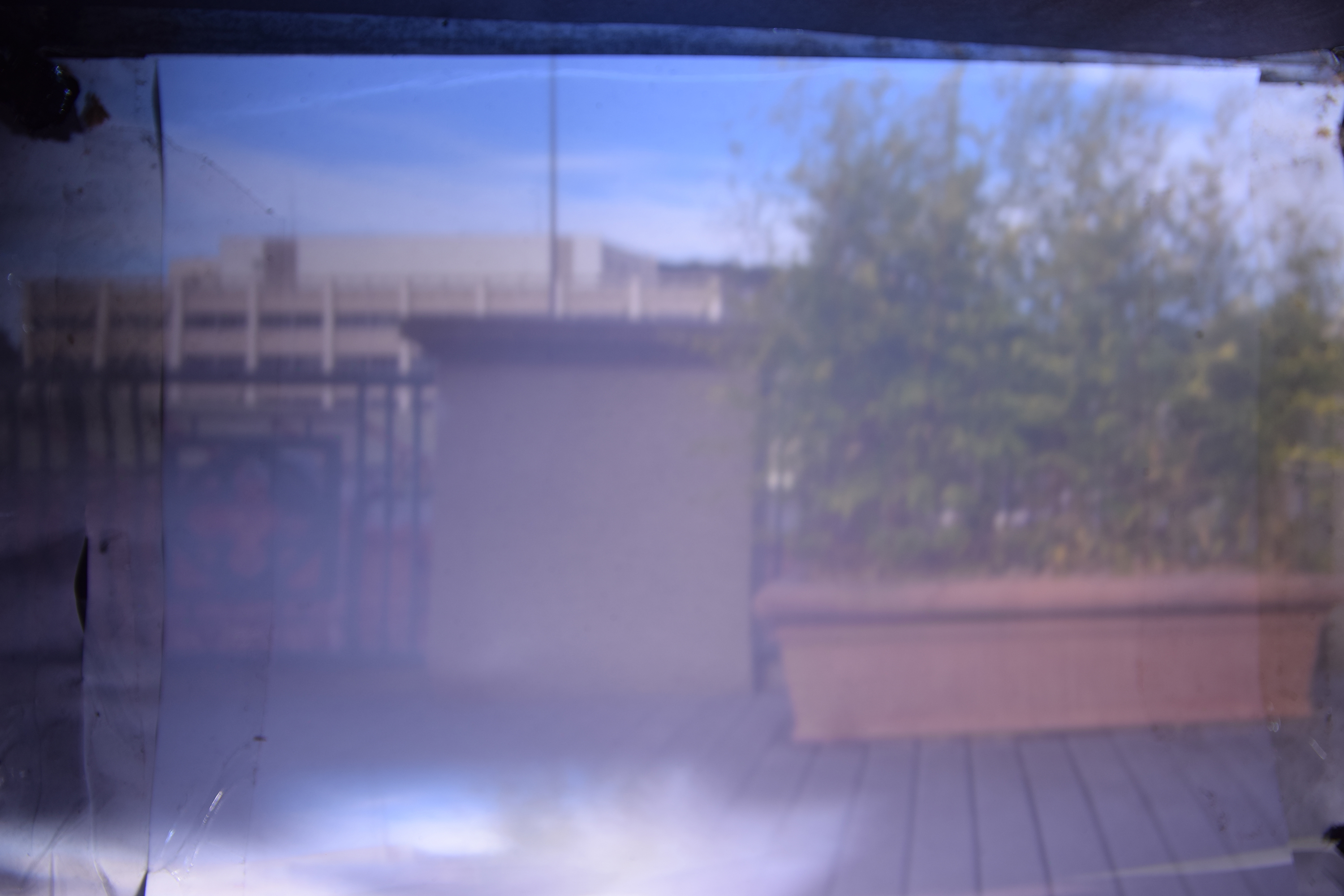CS 194-26: proj2
Jacob Holesinger: 26419985 cs194-26-agj
Jacqueline Forsberg: 26814270 cs194-26-abp
Mulan Xia: 26653065 cs194-26-agh
Building a Pinhole Camera
We created a Camera Obscura to demonstrate how light shining through a pinhole can display an image.
Pictures were captured upside down, but have been rotated for your viewing pleasure.
We used three sizes of pinholes (diameter):
Small: 1 mm
Medium: 2 mm
Large: 3 mm
Smaller vs. Larger Pinholes
The smaller pinhole size resulted in sharper images but dropped the image exposure. This is because a smaller pinhole allowed less light to enter. When light hits an object, the rays are reflected in all directions so unobstructed, the light from a single point on the object could potentially reach fill all of our image. However, well focused images require that the light captured on a point of the image plane come from a very small source in the real world. If this is not the case, then that point on the image becomes the average of many light sources in the real world and the real world light sources are spread around. Thus larger pinhole sizes result in blurier images. To acount for less light entering the camera at smaller pinhole sizes, we had to either boost the iso or the exposure time. Still, many of our small pinhole images came out dimmer than the larger pinholes. We decided that the medium pinhole resulted in better images when there wasn't as much light in the scene while the smaller pinhole was better in bright environments. In darker environments, we still had dim pictures with the smallest size despite increasing the exposure time to 30 seconds. However, the smaller pinhole images were noticably sharper.
Camera Model
We lined a cardboard box with black paper and then covered one of the internal sides with white paper. We cut two holes opposite the white paper. The large one was using for the camera while the smaller one was used as the pinhole. To create the filters, we poked holes into extra black paper and taped the filters over the smaller hole. The tape was easy to remove allowing the filters to be changed. Our pinhole was too far from the screen, so we had to use larger pinholes for the camera to have enough light to take a picture.

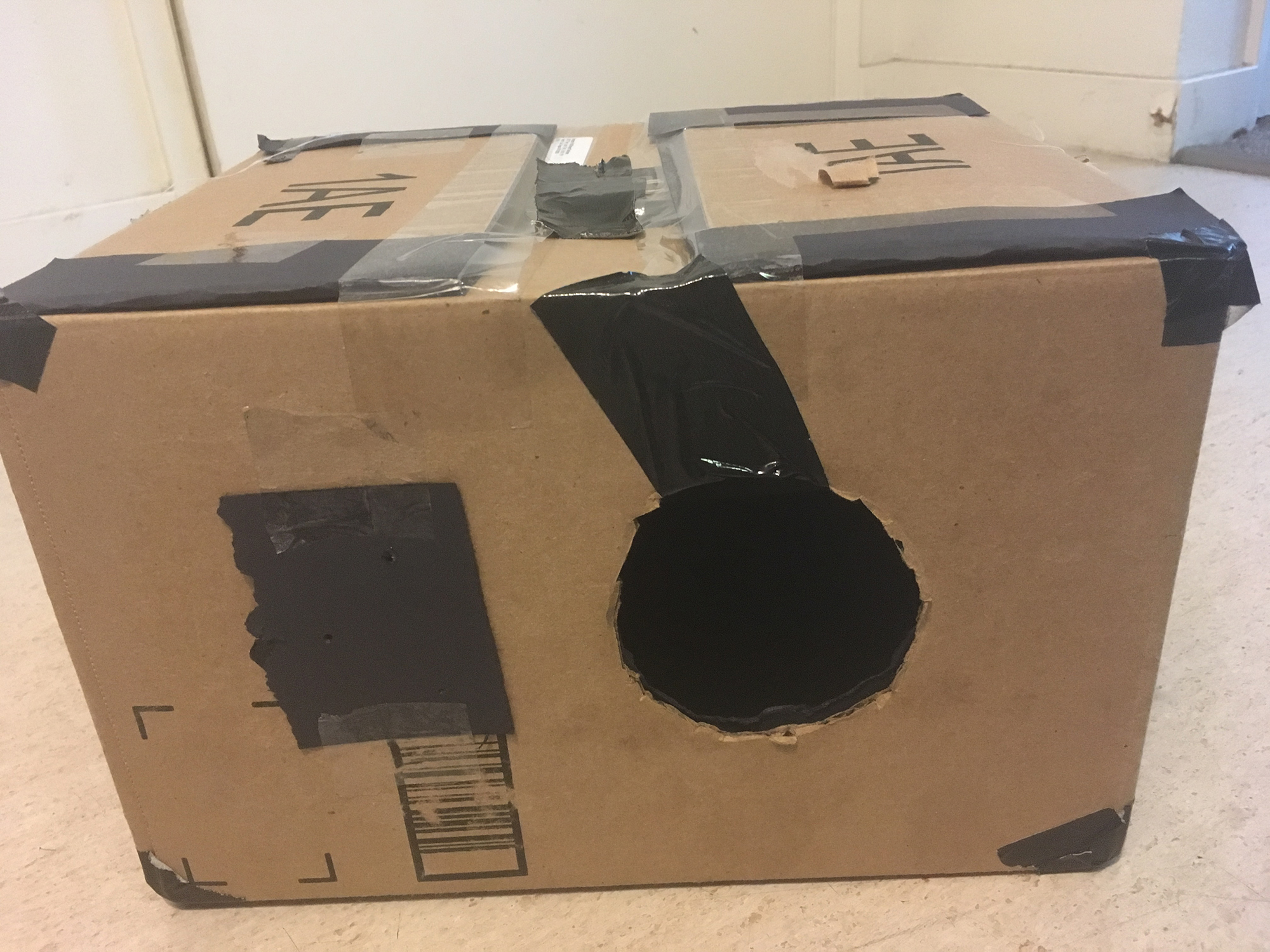
Scene #1
Scene #2
Best Diameter: Medium since it produced the best images in bright and dim light
| Jacob + Jacqueline |
VLSB trees |
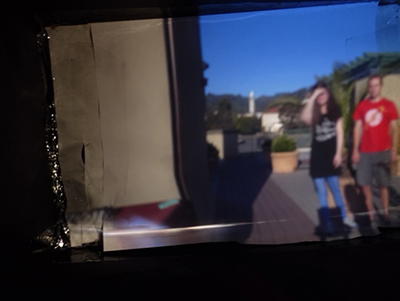 |
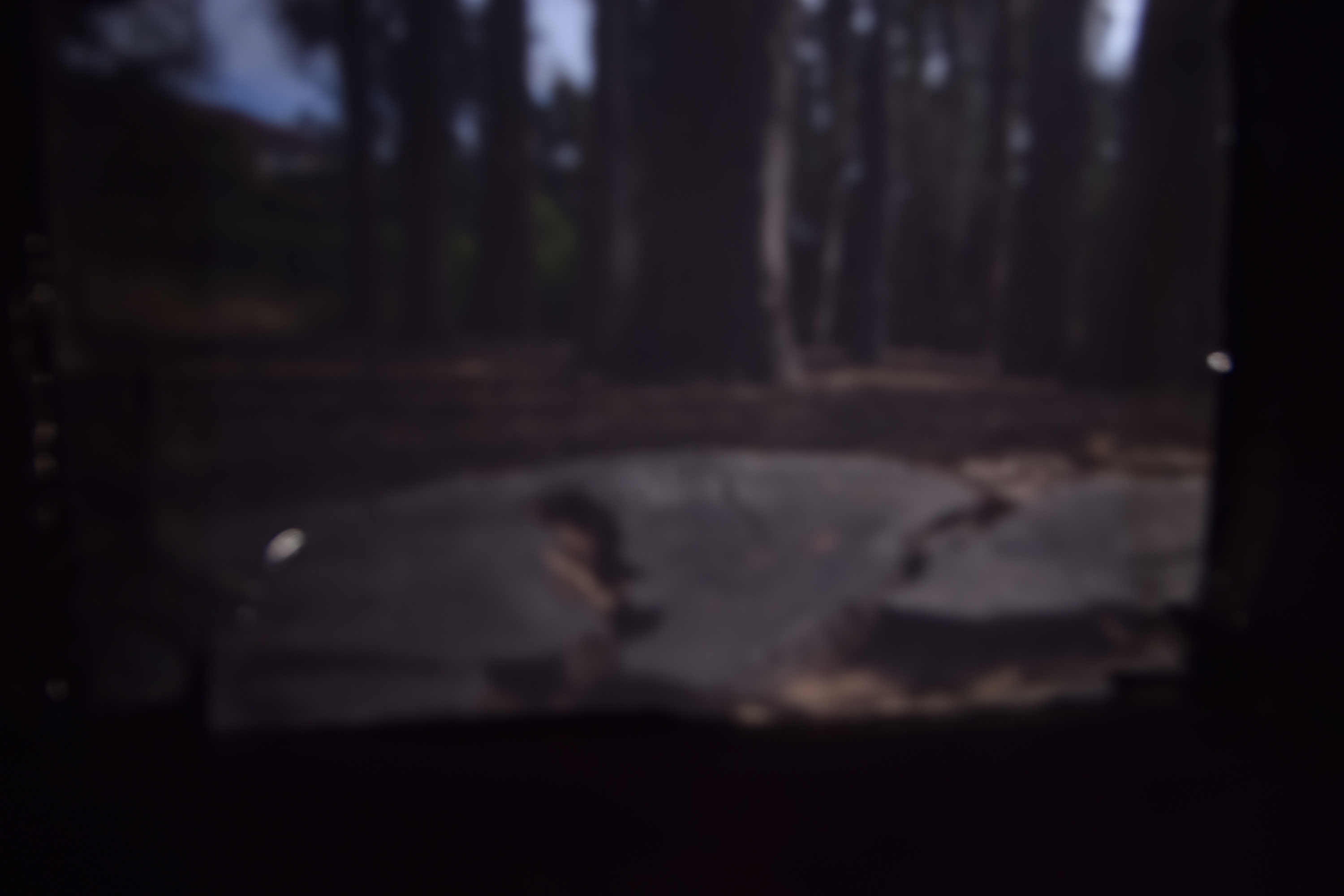 |
| Jacob |
Jacob |
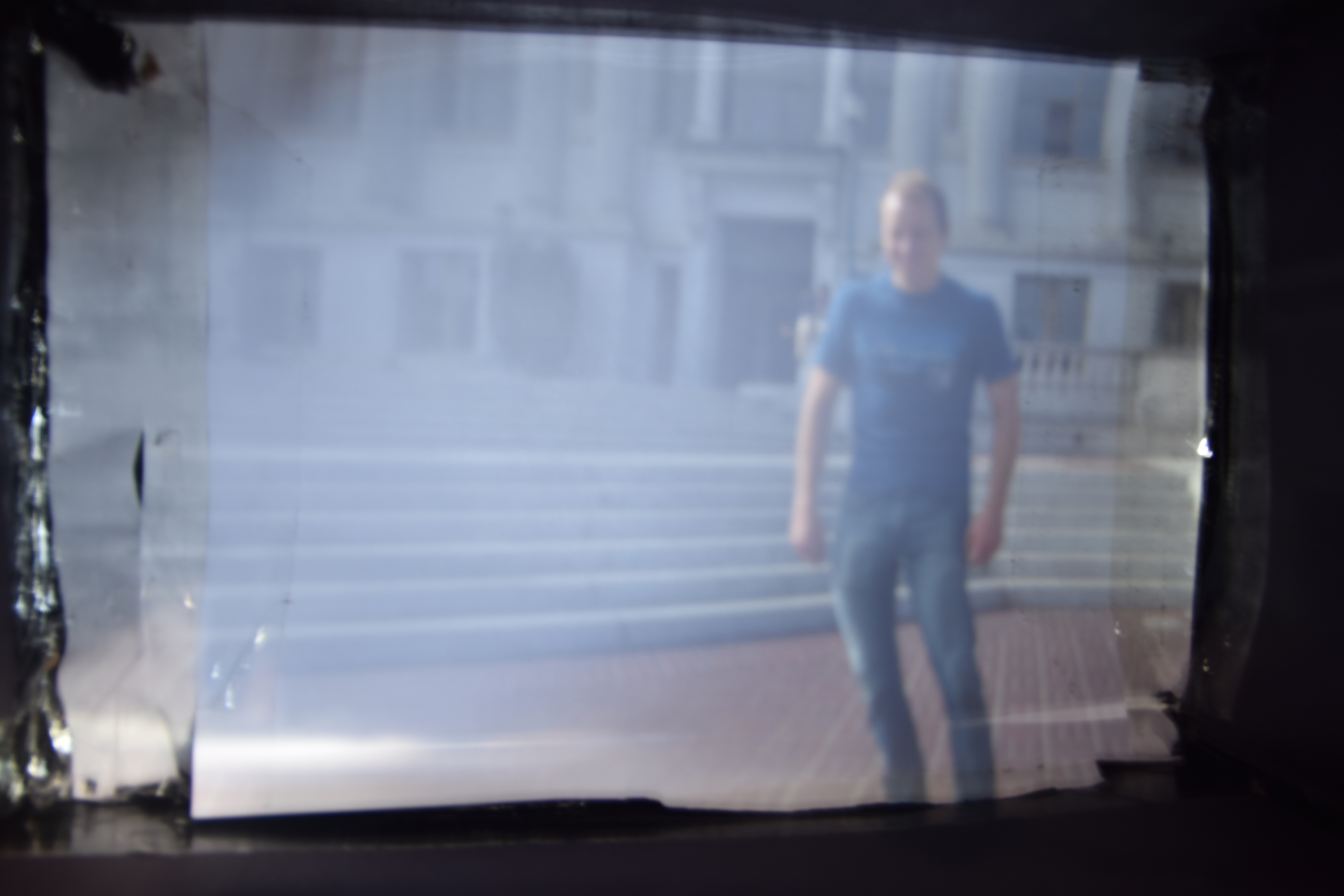 |
 |
This is a re-upload of cs194-26-agj submission as the images were not loading correctly.
